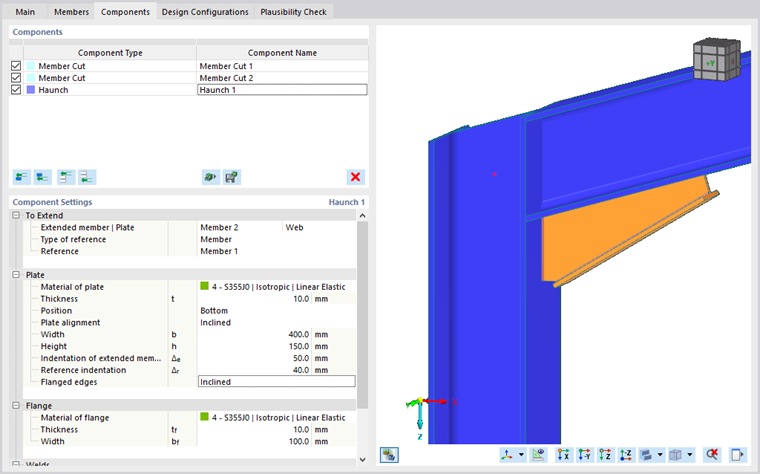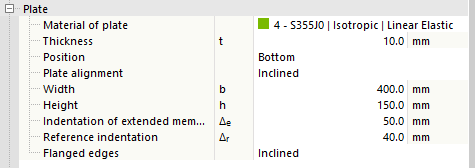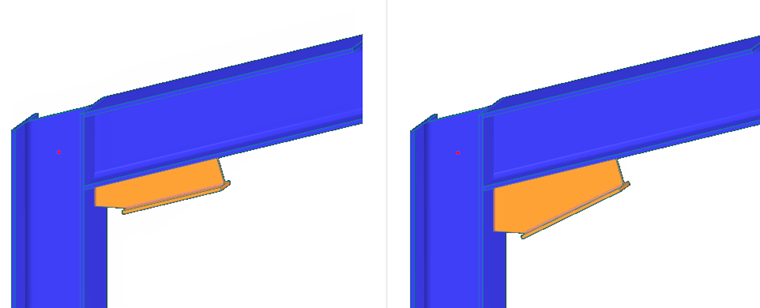Member plates can be extended by the use of a Haunch component. A haunch consists of a single extending plate or an extending plate supplemented by a flange.
To Extend
A haunch is defined as an extension of a member plate. Select this plate in the first row of the "To Extend" category, starting with the member name, and then move on to selection of the member plate. Then choose the type of reference (Member, Plate, or Auxiliary Plane). Selecting this type of reference influences the next row where only objects of the selected type are contained in the list. The final reference object governs the haunch geometry.
Plate
The next category defines the added part – the haunch itself.
When you have defined the plate material and thickness, select the position of the haunch. The possibilities are Bottom, Top and Both. When you choose Both, you will set the same haunches on both sides without having to define two components with the same setting.
The next item is the Plate alignment where you define the shape of the haunch. The possibilities are Parallel and Inclined. Parallel means that the haunch has an even height along its length. With Inclined, you have to define the height of the haunch at the beginning and at the end separately.
When you have set an Inclined plate alignment, you can specify the haunch width and the haunch height in the next two rows. Then enter the Indentation of extended member which is the height of the end of the member farther from the joint (and the height over the whole length if you have set a Parallel plate alignment). The last dimension is the Reference indentation. In this distance, the haunch edge is perpendicular to the reference member edge.
On the last row of the "Plate" category you can select the Flanged Edges, that is, which edges should be provided with a flange. There are four possibilities: without flanges, Inclined (or Parallel – depending on the selected plate alignment), Indentation, or All.
Inclined (or Parallel) means that only the edge that is not adjacent to either the extended member or the reference is provided with a flange. The Indentation option creates a flange only at the edges adjacent to the extended beam and to the reference. All means the combination of Parallel and Indentation, meaning that this option places flanges on all edges of the haunch.
Flange
If you have a flanged edge, you can define it in the following category, Flange. All the flanges are made of the same cross-section and material. The position of the flanges is selected in the Plate category.
Welds
For all cases where a newly created plate is in contact with another plate, it is possible to define a weld in the Welds category. The definition contains a checkbox showing whether the weld should be used, a weld type combo box, and for the fillet weld option, the weld thickness.










